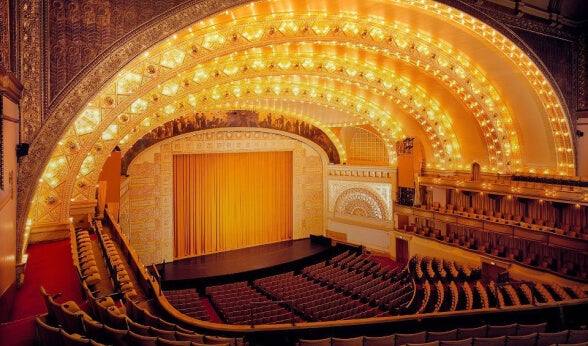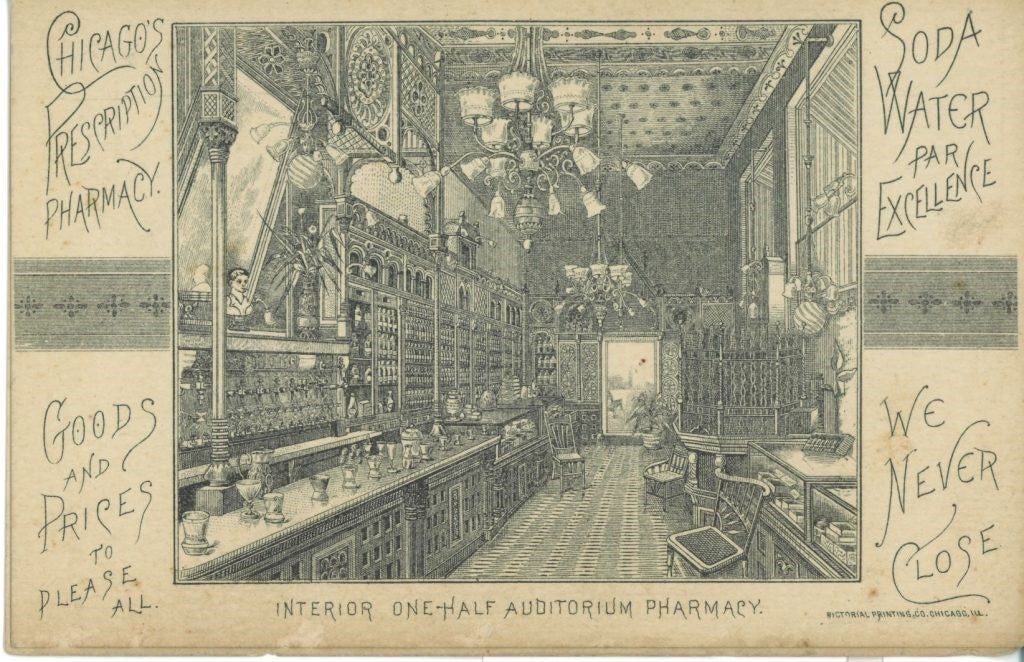
1889-1900
Bells and Whistles
The Auditorium Building was designed to be multipurpose. As mentioned in the previous chapter, to mitigate the accrual of expenses from performances, the Auditorium also served as a hotel and office. The Auditorium’s bar, which was generally known as the cafe, was a combination of a French cafe and American bar-room. Additionally, rental spaces for independent shops were available and on the corner of Wabash and Congress (now Ida B. Wells Drive) sat the Auditorium Pharmacy and perfume store, which sold Auditorium branded cold cream and even coffee! Today, we know this space as the Gage Gallery. Other businesses attached to the building included a barber shop and beauty salon. The culmination of all these accessory businesses attached to a grand theatre made the Auditorium a prominent social and economic hot spot, which immediately commanded the attention of not only the people of Chicago, but also the rest of the world.


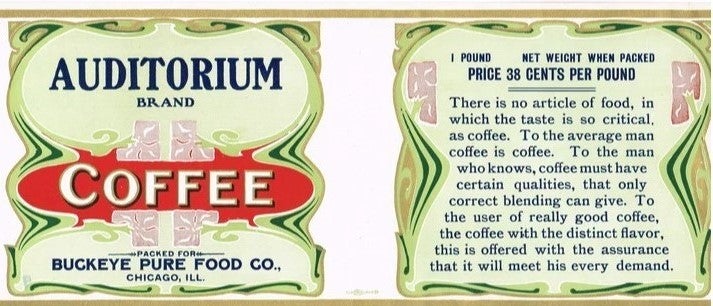
Inaugural Season
President Benjamin Harrison and his Vice President, Levi Morton, formally dedicated the opening of the Auditorium on December 9, 1889.
“I wish that this great building may continue to be at all your population that which it should be opening its doors from night to night. Calling your people away from cares of business to those enjoyments and entertainments which develop the souls of men and inspire those whose lives are heavy with daily toil. And in the magnificent and enchanted presence lift them for a time out of dull things, into those higher things where men should live.” – Benjamin Harrison, President of the United States at the Dedication of the Auditorium, 1889
The attendance of both high-ranking officials speaks to the significance of this building’s opening at the time. The Auditorium’s first month of operations welcomed back-to-back performances of operas, choral works, and other events. For weeks, almost every day something was happening at the Auditorium Theatre. Some works to highlight were Charles Gounod’s Roméo et Juliette, Gioachino Rossini’s Guillaume Tell, Giuseppe Verdi’s Il Trovatore, Aida, and so much more. All of which were high in demand pieces and were performed by some of the most popular talents at the time such as Adelina Patti and Francesco Tamagno. After many years of Chicago’s landscape of temporary buildings post fire, the Auditorium’s marathon of performances and events was not only exhilarating and impressive, but cemented a cornerstone for the Chicago arts.
Less than a year after the Auditorium’s opening on October 29, 1890, the theatre’s pipe organ was dedicated and revealed! This massive 7,193 pipe Frank Roosevelt No. 400 organ was the largest of Roosevelt’s designs and one of the largest in the country. Audience members listened to the mesmerizing music of Theodore Dubois’ Fantaisie Triomphale (a piece that was composed specifically for the Auditorium’s organ), Alexandre Guilmant’s Symphony in D Minor, Op. 42, and other pieces that added up to a full program. American Organist, Clarence Eddy, helped dedicate the new grand organ and in the inaugural program he wrote, “one is filled with admiration and pride — admiration for so grand and magnificent an enterprise, and pride for the fact so great and important a work of art can be produced in this country.”[1]

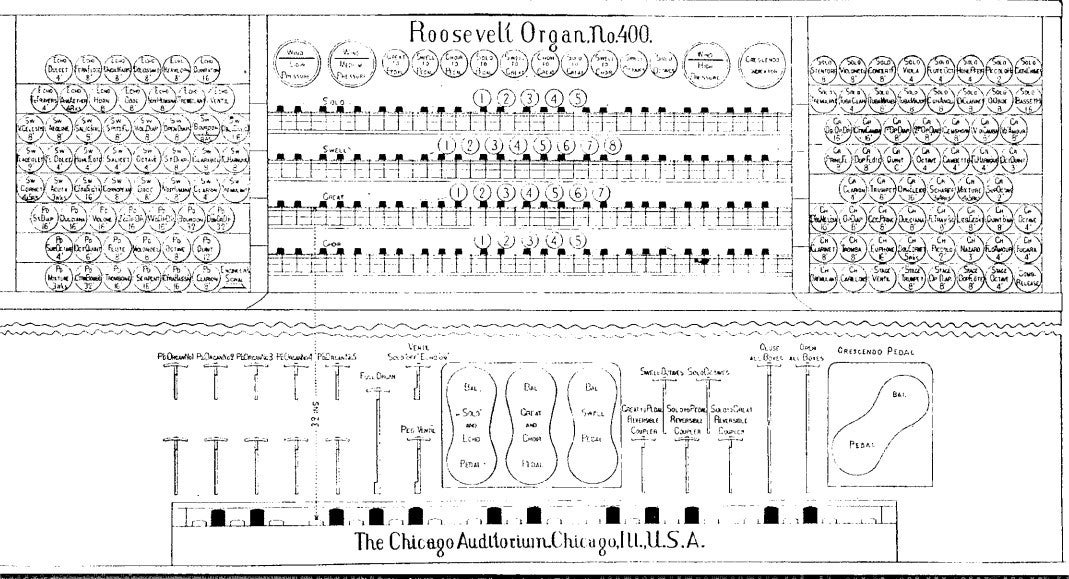

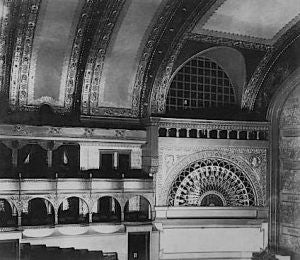
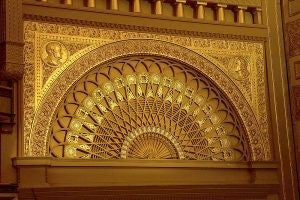
Chicago Symphony Orchestra
In 1891, the Chicago Symphony Orchestra was founded and called the Auditorium its first home. The orchestra stayed at the Auditorium for 14 years under the artistic direction of Theodore Thomas before moving up the block to Symphony Hall. The Chicago Symphony Orchestra performed Wagner’s A Faust Overture, Beethoven’s Fifth Symphony, Tchaikovsky’s First Piano Concerto with Rafael Joseffy, and Dvořák’s Husitská Overture under Thomas’ baton for its first concert.[2]
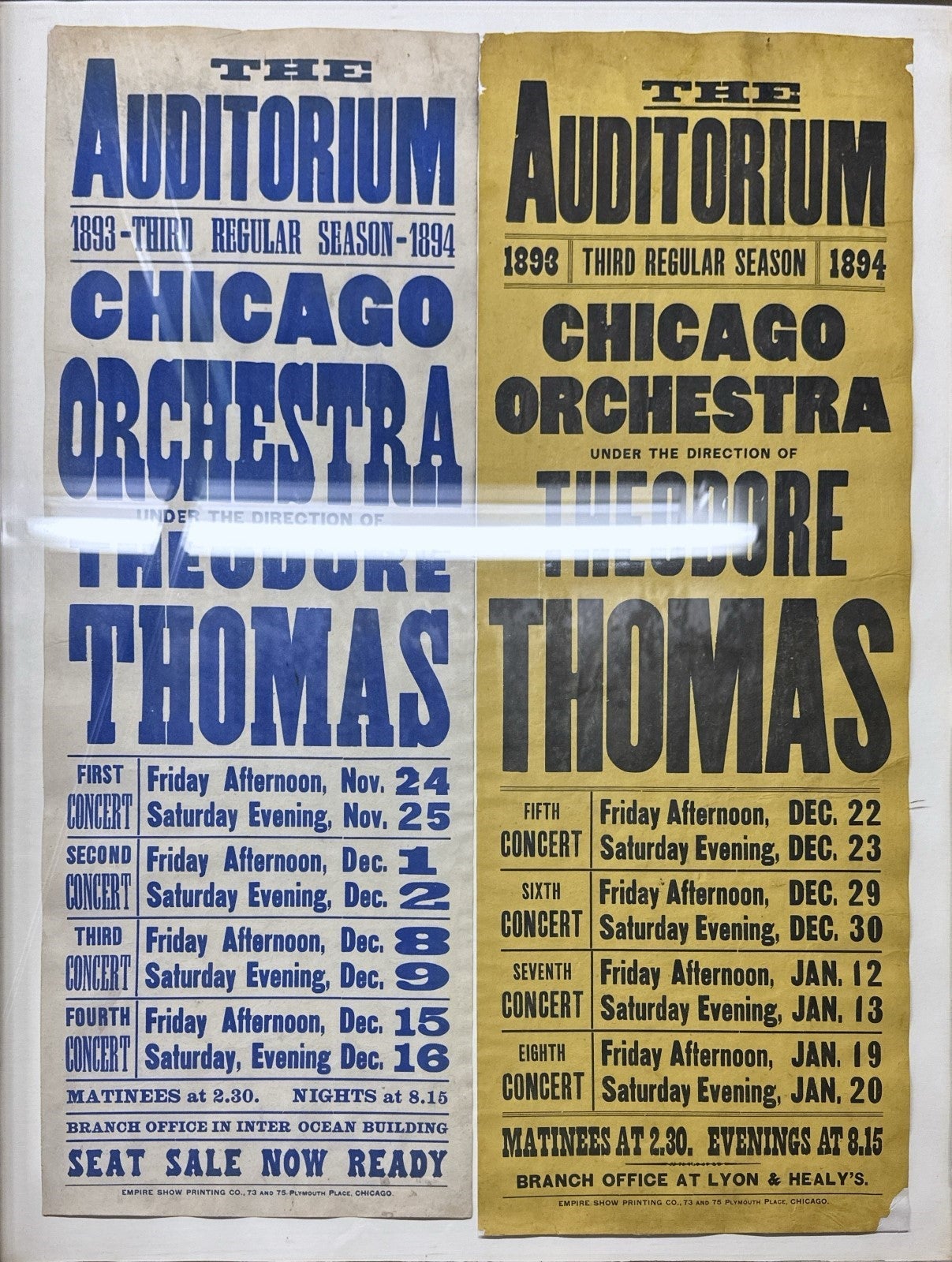
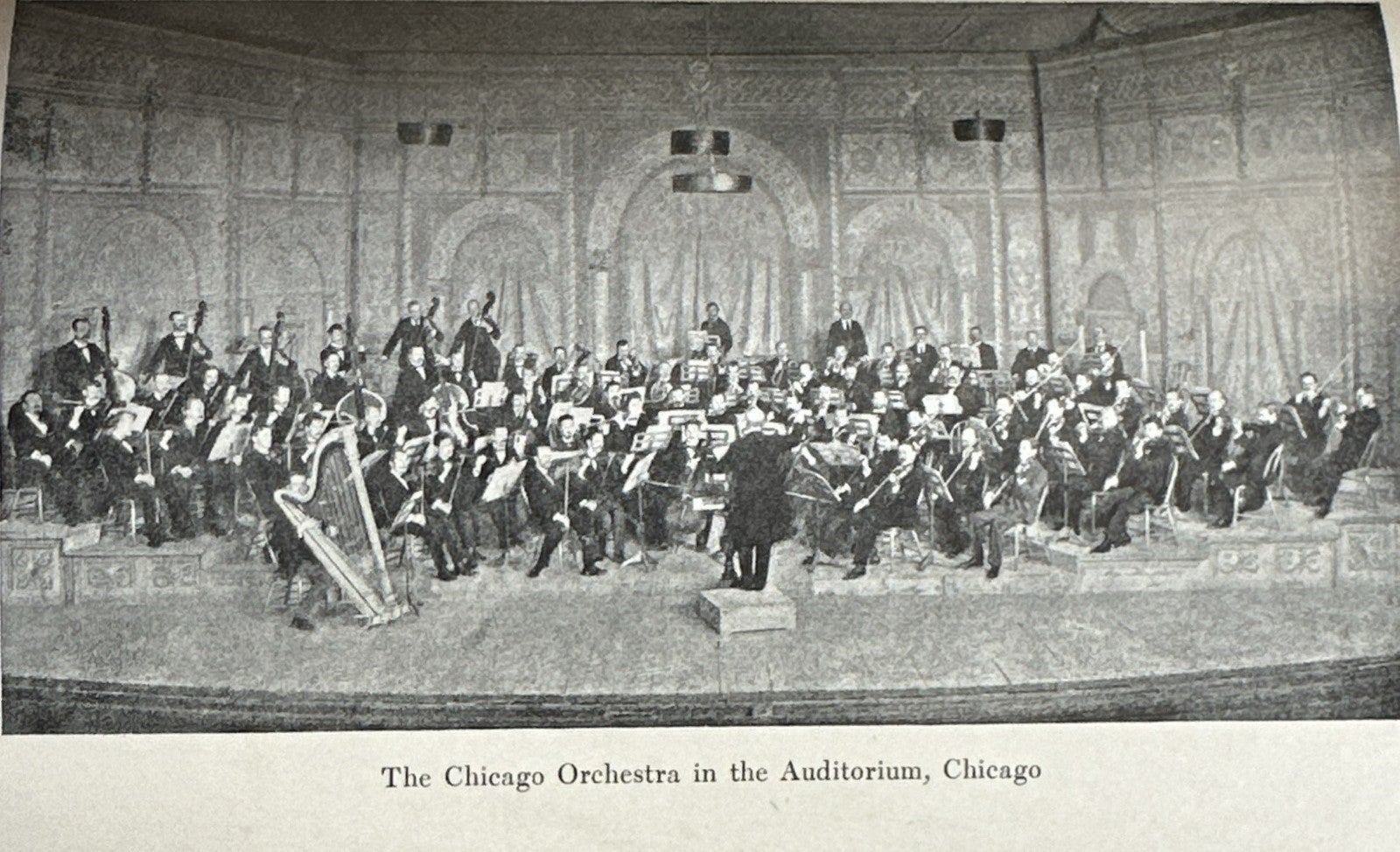
Baseball in a Theatre
In 1887, indoor baseball was invented in Chicago and quickly became popular during the colder months, later becoming outdoor softball. This new iteration of baseball used a 17″ ball and an undersized bat. The playground for this sport was not limited to only gymnasiums, but also to unexpected places including the Auditorium. For at least three years, beginning in 1891, an annual game of indoor baseball was held in the newly constructed building. [3] One notable game was between Farraguts vs. LaSalles on January 10, 1891.
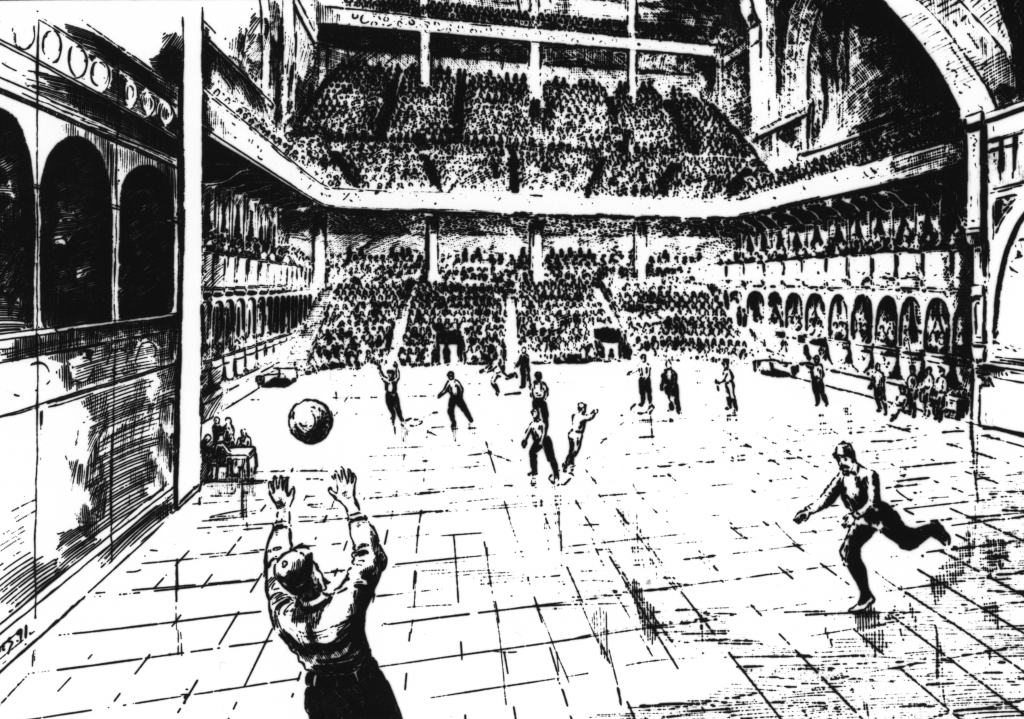
1893 World’s Columbian Exposition
The inauguration of the Auditorium Theatre helped confirm that Chicago surpassed the tragic fire and was now ready for a permanent place on the world’s stage. Its recognition as the most significant building of the age even helped secure the 1893 World’s Columbian Exposition for the city of Chicago over New York City, Washington D.C. and St. Louis.[4] Many figures that designed the World’s Columbian Exposition are also part of the Auditorium’s history. These individuals include Louis Sullivan, Dankmar Adler, George L. Healy, Louis J. Millet, Theodore Thomas, and others.
Booker T. Washington
Evidence of the Auditorium’s principles in inclusion and equality can be traced throughout its history and the historic events that have taken place on our stage. In October 1898, Chicago celebrated the National Peace Jubilee, commemorating the end of the Spanish-American War. While this was a victory for the whole country, Chicago received national attention for the city’s enthusiasm and the gathering of the President of the United States, and other important state and national officials. The streets of downtown Chicago were decorated brilliantly with bright lights and patriotic spirit, but the grandest part of the festivities was held at the Auditorium where Booker T. Washington delivered his famous speech regarding the African American allegiance to the United States. [5]
In this speech, he recounts the times African Americans have displayed their unwavering loyalty to the United States including the death of Crispus Attucks at the beginning of the American Revolution, the bravery of troops of color at the front lines in war, slaves protecting and supporting their masters’ families while the latter was fighting to perpetuate black slavery, and more. These recollections were used as testaments to the devotion that African Americans have exhibited throughout United States history, and supported Washington’s argument that a race that is so willing to die for its country should also be given the highest opportunity to live for its country. Booker T. Washington concluded his speech with, “whether in war or in peace, whether in slavery or in freedom, we have already been loyal to the Stars and Stripes,” leaving his full house audience with the challenge to celebrate the African American loyalty by ending racial prejudice. [6]
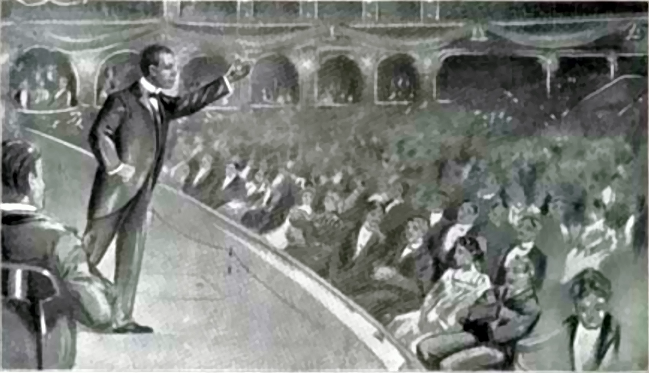
Fun facts:
- The Eiffel Tower was built in 1889, the same year as the Auditorium Theatre!
- In Erik Larson’s popular novel, The Devil in the White City, that details the 1893 World’s Columbian Exposition, the Auditorium’s significance during that era is mentioned several times.
“Although Chicago was rapidly achieving recognition as an industrial and mercantile dynamo, its leading men felt keenly the slander from New York that their city had few cultural assets. To help address this lack, one prominent Chicagoan, Ferdinand W. Peck, proposed to build an auditorium so big, so acoustically perfect, as to silence all the carping from the East and to make a profit to boot. Peck envisioned enclosing this gigantic theater within a still larger shell that would contain a hotel, banquet room, and office. The many architects…agreed this would be the single most important architectural assignment in the city’s history…” [pg. 29]
Citations
1. Petty, Bynum. “Chicago’s Magnificent Auditorium Theatre and Its Roosevelt Organ.” The Tracker 66.1 (2022): 30–36. Print.
2. “The First Concert: Chicago Symphony Orchestra.” Experience the Chicago Symphony Orchestra. Accessed January 31, 2024. https://cso.org/experience/article/7521/the-first-concert.
3. Mallory, Patrick, “The Game They All Played: Chicago Baseball, 1876-1906” (2013). Dissertations. 530.
4. Scott. “The Making of the White City (Part 1).” Chicago’s 1893 Worlds Fair, February 13, 2023. https://worldsfairchicago1893.com/2023/02/12/the-making-of-the-white-city-part-1/.
5. Gale, Dr. Neil. “National Peace Jubilee in Chicago, IL. October 16-22, 1898, Commemorating the End of the Spanish-American War.” The Digital Research Library of Illinois History JournalTM, June 26, 2020. https://drloihjournal.blogspot.com/2020/06/national-peace-jubilee-in-chicago-october-16-22-1898.html.
6. Washington, Booker T, Thanksgiving Peace Jubilee Exercises, and Daniel Murray Pamphlet Collection. An Address. [Chicago: s.n, 1898] Pdf. https://www.loc.gov/item/91898139/.
